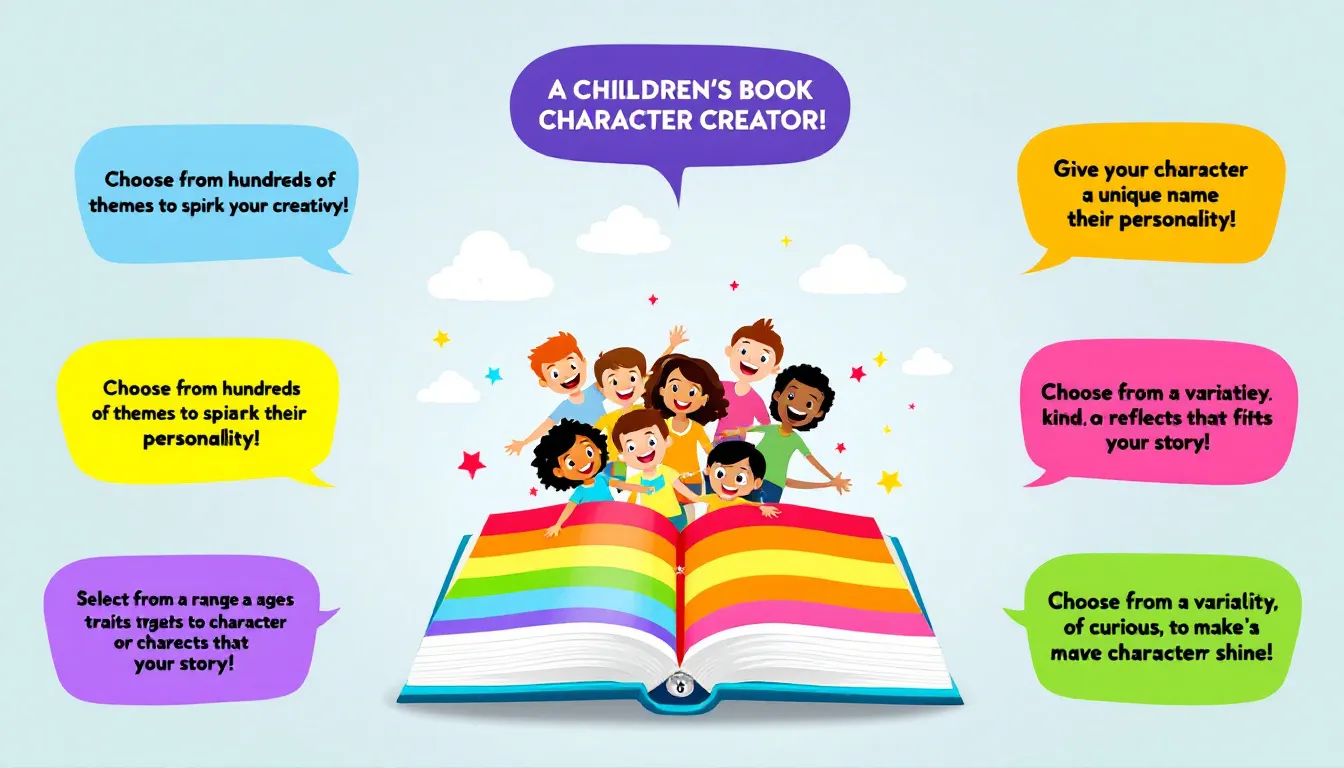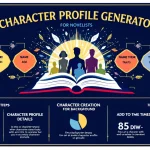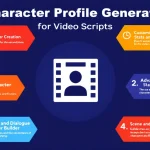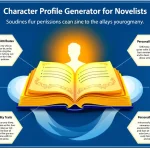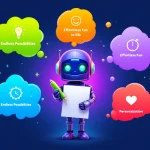Is this tool helpful?
How to Use the Children’s Book Character Profile Generator Effectively
To maximize the potential of this intuitive children’s book character profile generator, follow these straightforward steps to create dynamic, well-rounded characters that resonate with your young audience:
- Input the main topic or theme: Start by entering the primary theme of your story. Examples include “Courage in the Face of Fear” or “Friendship and Teamwork”. This helps center the character within the story’s message.
- Specify the character’s name: Select a fitting, memorable name such as Kai for an adventurous tale about exploration or Ember for a story about resilience. The name sets the tone and personality.
- Set the character’s age: Provide an age that aligns with your target readers, like 9 for an early middle-grade story or 5 for a preschool audience. This ensures age-appropriate traits and challenges.
- Enter the character’s gender (optional): If relevant, add gender identity, for example Non-binary or Girl. This flexible field supports inclusivity and diversity.
- Describe unique traits and abilities: Highlight special qualities such as “Loves inventing gadgets” or “Can speak in rhyme” that make your character stand out and spark imagination.
- Generate the profile: Click the “Generate Character Profile” button to instantly receive a detailed and structured character biography based on your inputs.
- Review and copy the profile: Examine the generated character profile, then use the “Copy to Clipboard” feature to export and integrate the content into your writing or lesson plans smoothly.
By carefully completing each field and following these steps, you will craft vibrant, multidimensional characters capable of captivating young readers and enriching your children’s book narrative.
Engaging Introduction: Definition, Purpose, and Benefits of the Character Profile Generator
The Children’s Book Character Profile Generator is a creative and practical online tool designed to help authors, educators, and storytellers develop compelling characters tailored to children’s literature. Its purpose is to streamline the character creation process by combining imagination with strategic prompts that guide users through essential character elements.
This innovative tool helps ensure characters are thematically relevant, age-appropriate, and psychologically relatable, while promoting diversity and inclusivity. By prompting users to provide key information such as the story’s theme, character age, motivations, and unique traits, it generates a structured, detailed profile that supports creative storytelling and educational outcomes.
Key Benefits of Using the Children’s Book Character Profile Generator
- Theme-Driven Character Development: Aligns characters with your story’s central message, enhancing narrative coherence.
- Tailored Age Relevance: Adapts character traits and development arcs according to the character’s specified age group.
- Support for Diversity & Inclusion: Encourages creation of inclusive characters representative of varied identities and experiences.
- Consistent Characterization: Provides a reliable reference that maintains character consistency throughout your writing process.
- Time-Efficient Workflow: Saves valuable time by quickly generating rich, detailed character profiles without sacrificing depth.
- Educational Utility: Assists educators in designing relatable characters for storytelling and classroom activities to foster creativity.
Practical Usage: Bringing Your Children’s Book Characters to Life
While this tool utilizes a backend API to process your input data and generate a comprehensive character summary, here are some practical ways you can effectively apply the generated profiles in your writing and educational projects:
1. Accelerating your Story Development
Use the detailed character profiles as foundational templates when outlining story arcs. For example, a profile generated for a curious 11-year-old named Nova who loves astronomy can inspire plot points involving discovery and exploration in your book.
2. Enhancing Character Depth and Relatability
The rich background, motivations, and growth areas outlined in the profile allow you to craft authentic narratives. For instance, you can portray how your character Amira, age 7, overcomes shyness by making new friends, modeled after the profile’s evolution section.
3. Supporting Collaborative Writing Efforts
Share generated character profiles with co-authors or illustrators to ensure everyone has a shared, detailed understanding of character traits and story relevance. This facilitates consistent and collaborative storytelling.
4. Integrating Characters into Educational Content
Teachers and educators can utilize generated profiles to create teaching aids, storytelling workshops, or creative writing prompts that encourage students to engage with character-driven narratives.
5. Aligning Characters with Educational Themes
Because the generator incorporates your book’s main theme, the profiles help maintain educational focus, such as environmental stewardship or empathy, by embedding these values deeply within your character’s identity and story arc.
Example Application
If your story revolves around “Embracing Curiosity”, and you input a character named Ravi, age 8, who is fascinated with bugs and nature, the tool could generate a profile highlighting his eagerness to learn, challenges in facing fears regarding new experiences, and growth in courage — a profile you can directly expand upon in crafting your book.
Important Disclaimer
The calculations, results, and content provided by our tools are not guaranteed to be accurate, complete, or reliable. Users are responsible for verifying and interpreting the results. Our content and tools may contain errors, biases, or inconsistencies. Do not enter personal data, sensitive information, or personally identifiable information in our web forms or tools. Such data entry violates our terms of service and may result in unauthorized disclosure to third parties. We reserve the right to save inputs and outputs from our tools for the purposes of error debugging, bias identification, and performance improvement. External companies providing AI models used in our tools may also save and process data in accordance with their own policies. By using our tools, you consent to this data collection and processing. We reserve the right to limit the usage of our tools based on current usability factors.
